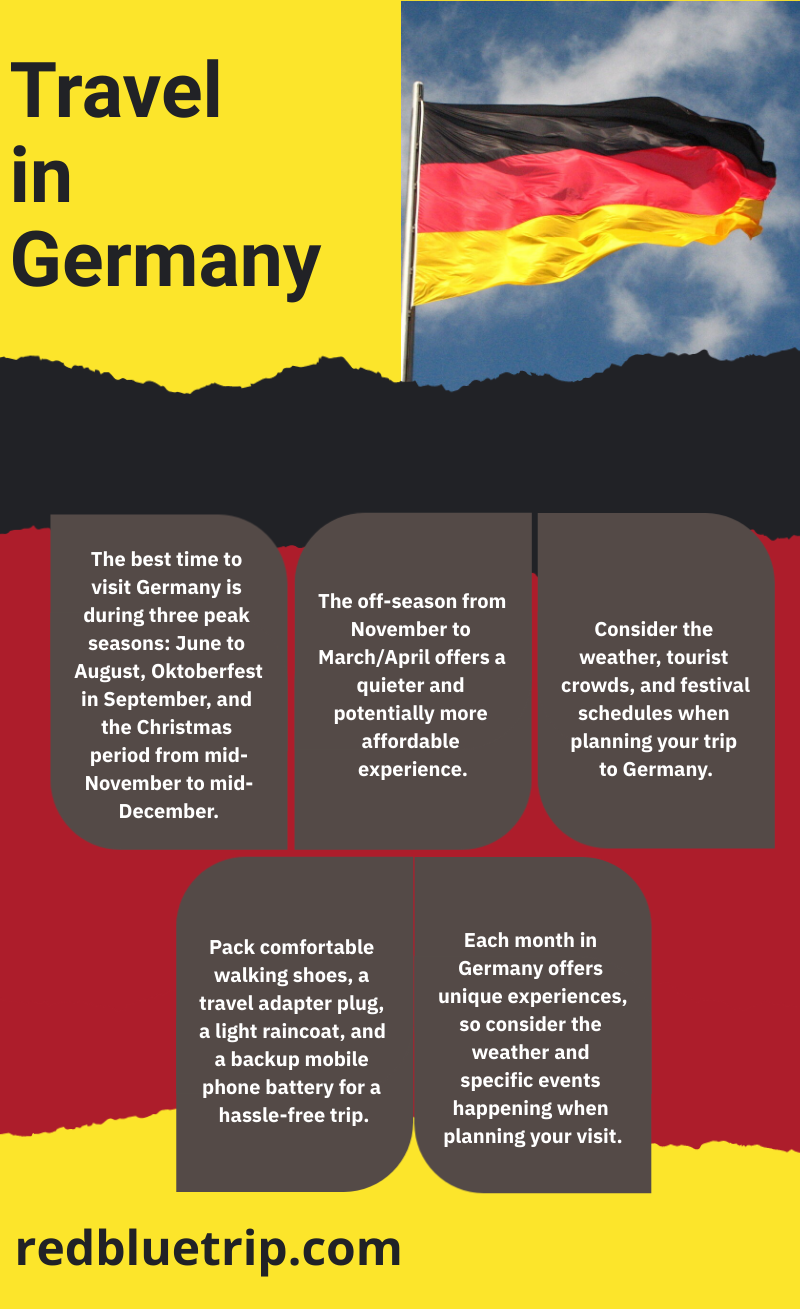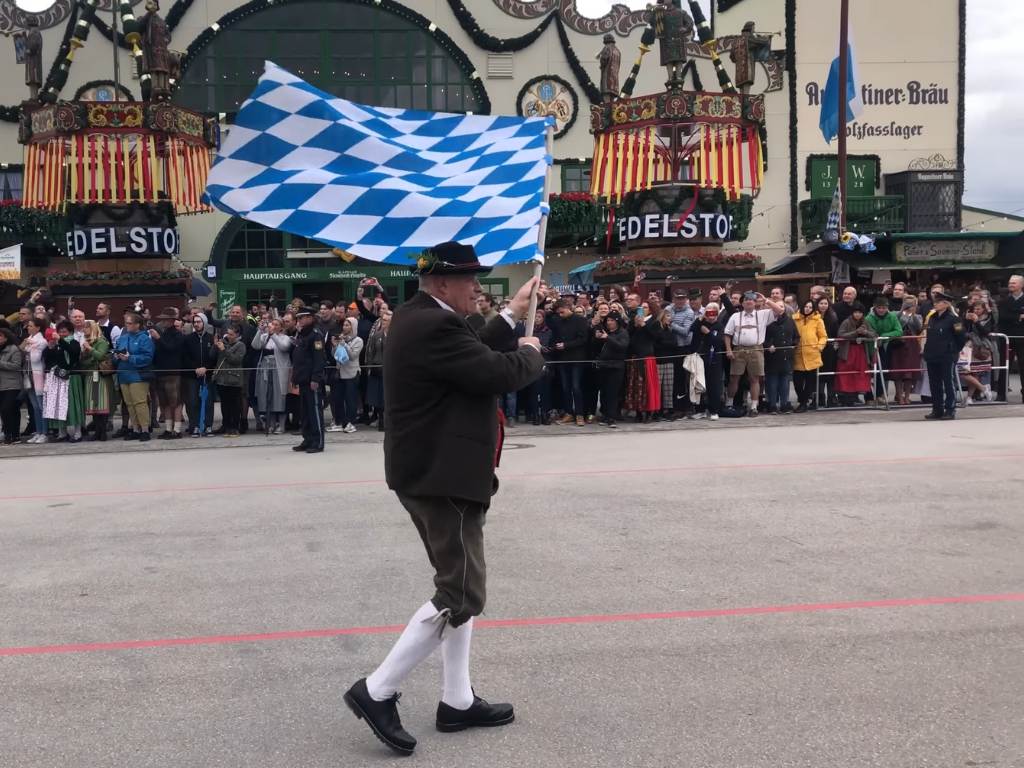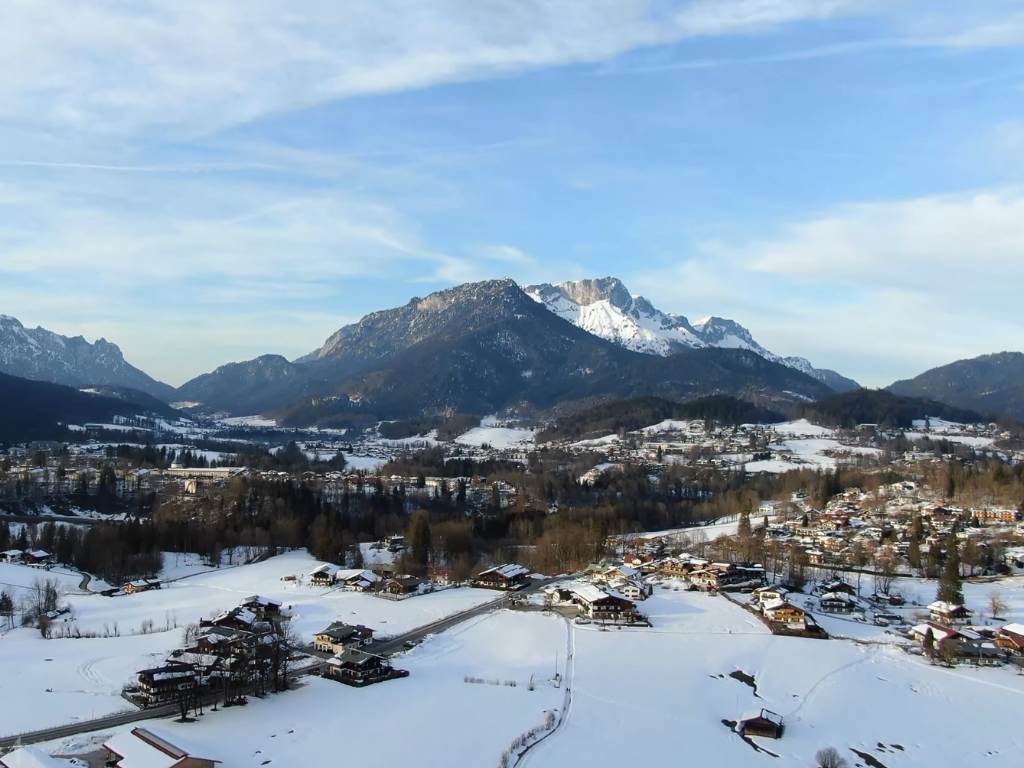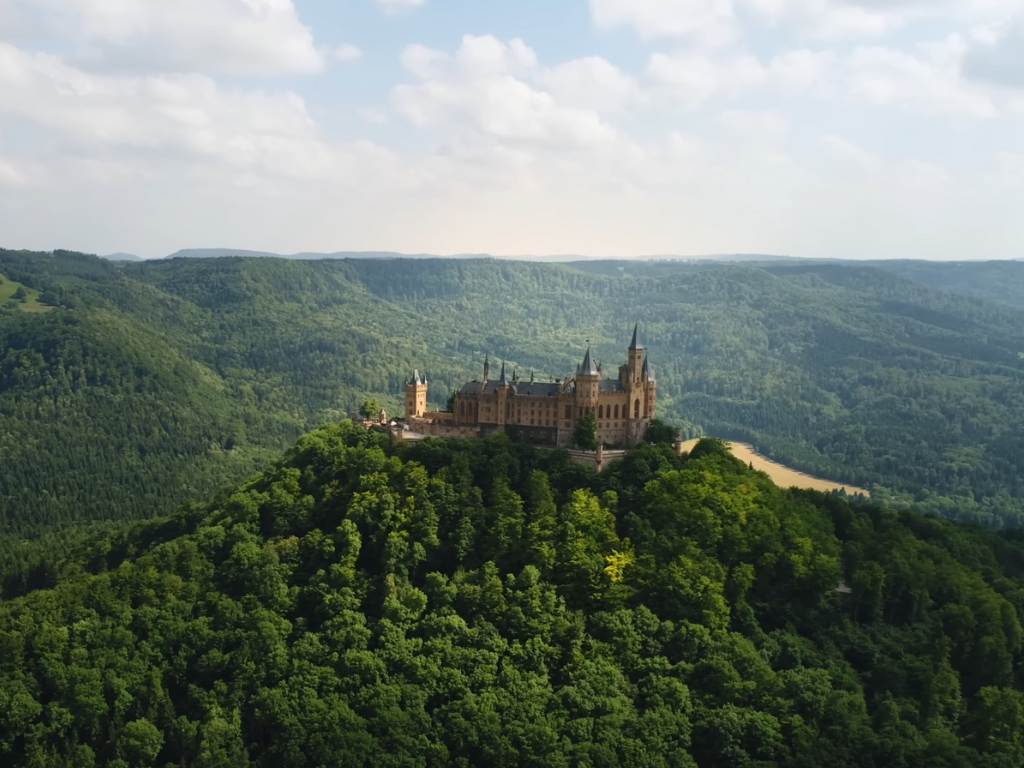Did you know that Germany attracts millions of visitors each year? From its vibrant festivals and cultural events to its charming cities and picturesque landscapes, Germany offers something for every traveler. Planning your trip to Germany can be an exciting endeavor, but it’s important to consider the best time to visit to make the most of your experience.
Imagine this: It’s a warm summer’s day in Berlin, and you find yourself exploring the historic streets of the city, immersing yourself in its rich history and vibrant atmosphere. The sun sparkles on the Spree River, as you stroll along the famous Unter den Linden boulevard, lined with historical landmarks and cultural institutions. You stop at a local cafe to enjoy a refreshing German beer and indulge in a traditional pretzel, savoring the flavors of this vibrant city.
Now picture this: It’s late November in Munich, and you find yourself wandering through the enchanting Christmas markets that have sprung up across the city. The air is filled with the scent of mulled wine and roasted almonds, as you browse the stalls adorned with twinkling lights and beautiful crafts. You warm yourself with a cup of hot chocolate, taking in the magical ambiance of the season.
Whether you’re seeking the excitement of Oktoberfest, the beauty of cherry blossoms in bloom, or the festive charm of Christmas markets, choosing the right time to visit Germany can greatly enhance your travel experience.

Best Season to Visit Germany
Germany welcomes visitors throughout the year, but there are certain seasons that offer unique experiences and attractions. The best season to visit Germany is during the summer months of June to August.
This is the peak tourist season when the weather is warm and pleasant, making it ideal for outdoor activities and sightseeing. From exploring the historic streets of Berlin to strolling along the scenic Rhine River, Germany’s vibrant cities and picturesque landscapes come alive during these months.
One of the highlights of the German calendar is Oktoberfest, which takes place in September. This world-famous beer festival in Munich attracts large crowds from around the globe. Visitors can immerse themselves in the festive atmosphere, indulge in traditional Bavarian cuisine, and enjoy the lively music and dancing.
Another enchanting time to visit Germany is during the Christmas season from mid-November to mid-December. The country transforms into a winter wonderland with the opening of enchanting Christmas markets. These markets are a feast for the senses, offering traditional crafts, delicious food, and, of course, the famous mulled wine, known as Glühwein. It’s the perfect opportunity to experience the magical ambiance and festive spirit that Germany is renowned for.
Whether you’re exploring historic landmarks, indulging in culinary delights, or joining in the festivities, these seasons offer the best of Germany’s cultural richness and natural beauty. Plan your visit during the best season that aligns with your interests and immerse yourself in the incredible experiences that Germany has to offer.
Off-Season in Germany
The off-season in Germany, from November to March/April, offers a unique opportunity to experience the country in a quieter and more serene environment. While the weather may be colder, especially in the South and East, this season has its own charm and appeal for travelers seeking a different side of Germany. With fewer tourists and potentially lower prices for accommodations and attractions, it’s an ideal time for those looking to escape the crowds and explore at a leisurely pace.
The winter months in Germany provide a picturesque backdrop, often adorned with snow-capped landscapes that create a magical atmosphere. This is particularly true in the South and East, where snowfall is common. Temperatures can drop as low as 33.8°F (1°C), making it the perfect time for winter sports enthusiasts to hit the slopes and enjoy activities like skiing, snowboarding, and ice skating.
By March, snow becomes less common, and intermittent rain starts to dominate the weather. While the chill may linger, the beauty of Germany in early spring begins to emerge. It’s a time when nature comes alive, with blooming flowers and trees, especially in parks and gardens. The occasional rainfall can be seen as an opportunity to cozy up in a traditional German café, sipping hot chocolate or indulging in a warm bowl of soup.
During the off-season, Germany’s popular attractions and landmarks are less crowded, allowing visitors to take their time and fully appreciate their surroundings. Explore the fairy-tale-like castles nestled in the countryside, such as Neuschwanstein Castle or Heidelberg Castle. Wander through the streets of historic cities like Munich, Berlin, or Cologne, discovering hidden gems and experiencing the local culture.
To make the most of your off-season adventure in Germany, it’s essential to pack accordingly. Layered clothing, including warm sweaters and jackets, is recommended to combat the chilly temperatures. Comfortable shoes are a must for exploring the cobblestone streets and historic sites. Don’t forget to bring an umbrella or raincoat as the weather can be unpredictable with intermittent rain.
Overall, the off-season in Germany provides a unique and tranquil experience for those willing to embrace the colder weather and occasional rainfall. It’s a time to immerse oneself in the country’s rich history, indulge in hearty cuisine, and marvel at its natural beauty without the crowds. Whether you’re exploring the festive Christmas markets in November, enjoying winter sports in December, or witnessing the transition to spring in March/April, Germany in the off-season offers an unforgettable journey of discovery.
Festivals and Events in Germany
Germany is renowned for its lively festivals and events that take place throughout the year. From cultural celebrations to seasonal markets, there are numerous opportunities to immerse yourself in the vibrant atmosphere of the country. When planning your trip, be sure to consider these exciting festivals and events that showcase the rich cultural heritage of Germany.
Summer Festivals
During the summer months, Germany comes alive with a variety of festivals that cater to different interests. The Schützenfest Hannover, held in July, is one of the largest marksmen festivals in Europe, featuring parades, shooting competitions, and live music.
Wine enthusiasts can indulge in the Freiburg Wine Festival, also in July, where they can sample a wide selection of regional wines while enjoying live entertainment. In Berlin, the Berlin Culture Festival offers a diverse program of music, art, and performances that showcase the city’s vibrant cultural scene.
Oktoberfest in Munich
No discussion of German festivals would be complete without mentioning Oktoberfest in Munich. This world-famous beer festival attracts millions of visitors from around the globe. Held annually in September, Oktoberfest is a lively celebration of Bavarian culture, featuring beer tents, traditional music, and mouthwatering Bavarian cuisine. It’s an unforgettable experience that offers a glimpse into German traditions and hospitality.
Christmas Markets
The Christmas markets in Germany are a beloved tradition that spreads festive cheer during the holiday season. Opening in late November, these markets transform town squares into enchanting wonderlands adorned with twinkling lights and festive decorations.
Visitors can browse through stalls selling handmade crafts, enjoy traditional holiday treats like mulled wine and gingerbread, and soak up the magical atmosphere. The Christmas markets in Nuremberg, Cologne, and Dresden are some of the most renowned and picturesque in the country.
“Germany’s festivals and events offer a captivating blend of culture, tradition, and fun. Whether it’s raising a stein at Oktoberfest or exploring the whimsical Christmas markets, there’s something for everyone to enjoy.”
Planning Your Trip
When planning your visit to Germany, it’s important to keep these festivals and events in mind. They can significantly impact the availability of accommodations and the number of tourists in popular destinations. If attending a specific festival is a priority for you, it’s advisable to book accommodations well in advance. Additionally, consider the local transportation options and plan your itinerary accordingly to make the most of your time.
Clothing and Essentials for Germany

When planning a trip to Germany, it’s important to pack wisely to ensure a comfortable and enjoyable experience. Here are some essential items and tips to keep in mind:
1. Comfortable Walking Shoes
Exploring the cities and towns of Germany often involves a lot of walking, so it’s crucial to pack comfortable walking shoes. Opt for sturdy sneakers or walking shoes that provide good support for long walks and sightseeing.
2. Travel Adapter Plug
To keep your electronic devices powered up during your trip, make sure to bring a travel adapter plug for the German two-pronged cylindrical version. This will allow you to easily charge your devices without any compatibility issues.
3. Light Raincoat and Compact Umbrella
Germany’s weather can be unpredictable, so it’s wise to pack a light raincoat and a compact umbrella. These items will come in handy if you encounter sudden showers or drizzles while exploring the cities or enjoying outdoor activities.
4. Mobile Phone and Backup Battery
Staying connected while traveling is important for navigation, communication, and capturing memories. Check your mobile phone network’s compatibility in Germany and consider purchasing a local SIM card or an international data plan. Additionally, having a backup battery or battery pack will ensure that you have enough power throughout the day.
5. Valid Passport
Before traveling to Germany, check the validity of your passport. It should be valid for at least six months from your date of departure from Germany. Additionally, ensure that your passport has two blank pages for each country you plan to visit in Europe.
By packing these essential items, you’ll be well-prepared for your trip to Germany and ready to explore all the beautiful cities, landscapes, and cultural attractions it has to offer.
Best Time to Visit Germany by Month

The best time to visit Germany can vary by month, offering a range of unique experiences throughout the year. Whether you’re seeking winter sports or summer festivals, Germany has something to offer every traveler.
January and February: Winter Sports and Snowy Landscapes
In January and February, Germany is covered in snow, making it an ideal time for winter sports enthusiasts. Skiing, snowboarding, and ice skating are popular activities in Bavaria, the Black Forest, and the Harz Mountains. The picturesque snowy landscapes create a magical ambiance, perfect for those seeking a winter wonderland experience. Warm up in cozy cabins and delight in traditional winter treats like glühwein and gingerbread cookies.
May and June: Warm Weather and Cherry Blossoms
May and June bring warmer weather and colorful cherry blossoms to Germany. It’s a delightful time to explore the parks and gardens, like Sanssouci Park in Potsdam or the English Garden in Munich, where cherry trees are in full bloom. Enjoy leisurely bike rides along scenic routes, sip refreshing German beers in outdoor beer gardens, and indulge in seasonal dishes made with fresh local produce.
July to September: Peak Summer Season and Vibrant Festivals
July to September is the peak summer season in Germany, offering a wide range of festivals and events. Experience the lively atmosphere of Berlin’s Carnival of Cultures, the Stuttgart Wine Festival, or the Leipzig Bach Festival. If you’re a history buff, visit Nuremberg during its Imperial Castle Festival, or explore the historic city of Bayreuth during the Richard Wagner Festival. The warm weather allows for outdoor activities like hiking, cycling, and swimming in the numerous lakes.
October: Avoid Crowds and Enjoy Autumn Colors
October offers a chance to avoid the tourist crowds and still enjoy pleasant weather in Germany. The vibrant autumn colors paint the landscape, creating a picturesque backdrop for exploring castles and picturesque towns. Enjoy wine tasting in the renowned wine regions of the Rhine and Moselle Valleys, or immerse yourself in Oktoberfest traditions in Munich. Take scenic drives through the countryside and visit the famous Neuschwanstein Castle, which inspired Disney’s Sleeping Beauty Castle.
December: Festive Christmas Markets and Snow-Capped Landscapes
In December, Germany comes alive with the magic of Christmas markets. Explore the enchanting stalls selling handcrafted gifts, enjoy traditional treats like bratwurst and gingerbread, and sip on warm spiced wine. The snow-capped landscapes create a fairy-tale setting, especially in the Bavarian Alps and the Black Forest. Visit iconic cities like Munich, Nuremberg, and Dresden, which are known for their magical Christmas markets and festive atmosphere.
When planning your visit, consider the weather and specific events happening each month to make the most of your trip to Germany.
| Month | Weather | Events/Highlights |
|---|---|---|
| January and February | Snowy, cold | Winter sports, snow festivals |
| May and June | Warm, cherry blossoms | Outdoor activities, garden tours |
| July to September | Warm, sunny | Summer festivals, outdoor activities |
| October | Mild, autumn colors | Oktoberfest, wine tasting, castle visits |
| December | Cold, snowy | Christmas markets, winter wonderland |
Best Places to Visit in Germany
Germany offers a multitude of captivating destinations that are sure to leave visitors spellbound. From historic cities to picturesque towns, there is something for everyone to explore and enjoy. Here are some of the best places to visit in Germany:
Augsburg
Augsburg is known for its rich historic heritage and its significant role in the textile trade. The city boasts stunning medieval architecture, including the Augsburg Cathedral and the Renaissance-era Town Hall. Visitors can also explore the Fuggerei, the world’s oldest social housing complex.
Baden-Baden
With its lavish Belle Époque charm and rejuvenating thermal baths, Baden-Baden attracts visitors seeking tranquility and luxury. The town is nestled in the heart of the Black Forest and offers a delightful blend of nature, art, and culture.
Bamberg
Bamberg is a charming town renowned for its unique brewing history. It boasts the highest concentration of brewpubs in the world and is a paradise for beer enthusiasts. Beyond its beer culture, Bamberg also mesmerizes visitors with its well-preserved medieval architecture and picturesque location along the Regnitz River.
Berlin
Berlin, the vibrant capital of Germany, is a city where history intertwines with modernity. From the iconic Brandenburg Gate to the remnants of the Berlin Wall, the city offers diverse cultural experiences. Visitors can explore world-class museums, enjoy vibrant nightlife, and immerse themselves in the city’s creative energy.
Dresden
Dresden is a city that seamlessly blends tradition and innovation. It is home to the largest green diamond in the world, the Dresden Green Vault, and is renowned for its exquisite porcelain figurines. Visitors can also marvel at the stunning architecture of landmarks such as the Frauenkirche and the Zwinger Palace.
Frankfurt
Frankfurt is a city where traditions collide with modernity. Its skyline is dominated by towering skyscrapers, earning it the nickname “Mainhattan.” Visitors can explore the historic Römerberg square, stroll along the picturesque River Main, and experience the city’s rich cultural offerings.
Each of these destinations offers a unique experience that showcases the beauty and diversity of Germany. Whether you’re fascinated by history, captivated by natural landscapes, or drawn to vibrant city life, Germany has something to satisfy every traveler’s wanderlust.
Conclusion
The best time to visit Germany depends on personal preferences and interests. If you enjoy warm weather and vibrant festivals, the summer months of June to August are ideal. During this time, you can experience the bustling atmosphere and soak up the sun while exploring the country’s diverse attractions.
For a truly magical experience, consider visiting Germany during the Christmas period from mid-November to mid-December. This is when the country comes alive with enchanting Christmas markets, where you can indulge in delicious holiday treats and purchase unique gifts.
If you prefer a quieter and potentially more affordable experience, the off-season from November to March/April is a great time to visit. Although the weather may be colder, you’ll have the opportunity to explore the country’s attractions without the large tourist crowds.
When planning your trip, it’s important to consider the weather, crowds, and specific events happening in each month. By packing accordingly and having a well-planned itinerary, you can make the most of your visit to Germany and create unforgettable memories.
FAQ
What is the off-season in Germany?
The off-season in Germany runs from November to March/April. During this time, the weather is colder, and snow is common in the South and East of the country. Temperatures can drop as low as 33.8°F. By March, snow is less common, and intermittent rain becomes more frequent.
What festivals and events are popular in Germany?
Germany is known for its vibrant festivals and events throughout the year. Some popular ones include Schützenfest Hannover, Freiburg Wine Festival, Berlin Culture Festival, Frankfurt Apple Wine Festival, Oktoberfest in Munich, and the Christmas markets that open in late November.
What should I pack when visiting Germany?
When visiting Germany, it’s important to pack comfortable walking shoes, a travel adapter plug for the German two-pronged cylindrical version, a light raincoat, a compact umbrella, a backup battery or battery pack for your mobile phone, and a passport valid for at least six months from your date of departure from Germany.
What is the best time to visit Germany by month?
The best time to visit Germany can vary by month. January and February are good for winter sports. May and June offer warm weather and cherry blossoms. July to September is the peak summer season with festivals and events. October is a good time to avoid crowds and queues. In December, you can experience the festive Christmas markets and snow-capped landscapes.
What are some popular places to visit in Germany?
Germany offers a wide range of attractions and destinations to explore. Some popular places to visit include Augsburg, Baden-Baden, Bamberg, Berlin, Dresden, and Frankfurt. Each destination offers unique experiences and attractions.

